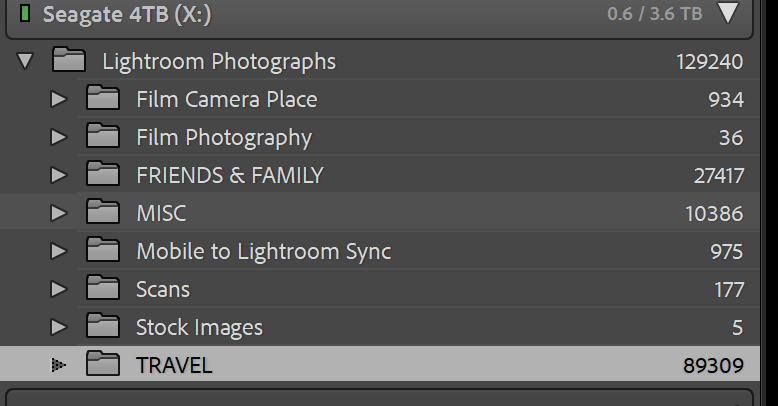Why I'm Building a New PC for Lightroom and Photo Editing in 2025
- stuartchard
- Jul 18, 2025
- 3 min read
Updated: Aug 1, 2025

As a travel photographer working with high-resolution images in Adobe Lightroom, I rely heavily on my editing setup to stay productive. My main Lightroom catalogue currently holds around 129,000 images — and counting. I’ve learned not to delete too quickly; with the constant improvement in editing tools, even an average photo today might become a keeper tomorrow.
Lightroom is at the heart of my editing workflow, but I regularly use other software too — including Luminar Neo, Topaz Gigapixel, DxO’s Nik Collection, and Photoshop. These programs are becoming increasingly demanding, especially as AI-powered features continue to evolve. And while my current PC isn’t exactly outdated, it’s definitely starting to struggle — particularly when handling large RAW files, applying complex masks, or exporting multiple images.
That’s why I’ve decided to build a brand-new PC — one specifically designed for photo editing, Lightroom performance, and multitasking across various editing apps. I built my current system about five years ago, during the pandemic, and to my surprise, I really enjoyed the process. Now that I’m retired, I have the time to properly research and plan a system that meets my specific needs — without paying the premium for a pre-built machine that doesn’t quite tick all the boxes.
In this post (and the ones that follow), I’ll walk you through the full journey: why I’m upgrading, which specs actually matter for photographers, how I chose the parts, and what I learned along the way. If you're considering building or upgrading a PC for photo editing, I hope this helps.
My Existing PC Specification

If this is your first time building a PC for photo editing, don’t worry about the details just yet — I’ll break down component choices in more depth in a future post. But for reference, here’s what I’m currently working with:
Motherboard: ASRock B450M Pro4
Processor: AMD Ryzen 5 1600 @ 3.2GHz
Graphics Card: Radeon RX580
Memory: 64GB DDR4
Storage 1 (C: Drive): 1TB Samsung SSD
Storage 2: 4TB HDD @ 5400rpm
Storage 1 is my primary drive — a fast SSD that holds Windows, application software, and my Lightroom catalogue. It’s now around 90% full, so even if I weren’t building a new system, this drive would need replacing.
Storage 2 is a standard mechanical hard drive. It’s slow but affordable, and it holds my documents, image files, and general data.
Backup Drives: I use three external drives for backups.
One 8TB drive is permanently connected to create full system images.
Two 4TB external drives are rotated — one stays with me, the other is kept off-site (usually in my car!).This setup gives me three copies of everything at all times.
What Problem am I trying to Solve?
It’s always a good idea to start any project by asking this simple question. If you don’t define the real problem, it’s hard to build a solution — or to know when you’ve actually solved it. So, here goes:
Many new Lightroom tools run slowly — especially Denoise, which can take a full minute per image. I rarely batch process with it unless I have something else to do for half an hour.
My camera now shoots 40MP images, which are roughly three times the size of the files I was working with when I started out. I shoot in RAW + JPEG and don’t plan to change that.
I’m jumping between multiple editing applications more often, pushing large files between Lightroom, Luminar, and Topaz. This creates frequent slowdowns and occasional failures.
I’ve opened an Etsy shop where I offer large-format prints. Producing files suitable for large prints at 300 DPI creates huge file sizes, which has a knock-on effect on both performance and storage.
I’m beginning to shoot and edit more video — nothing too demanding just yet, and I mostly use Adobe Express for reels and short clips. But it’s an area I’d like to explore further, and I want the system to be capable.
Occasionally, Lightroom just hangs.
Occasionally, Luminar just hangs too.(And when both decide to hang at once, it’s time for a coffee...)
So that’s my starting point.
In Part 2, I’ll walk through the options I considered — from upgrading parts of my existing system to switching platforms entirely — and explain why I decided a full rebuild was the right choice for me.



Comments